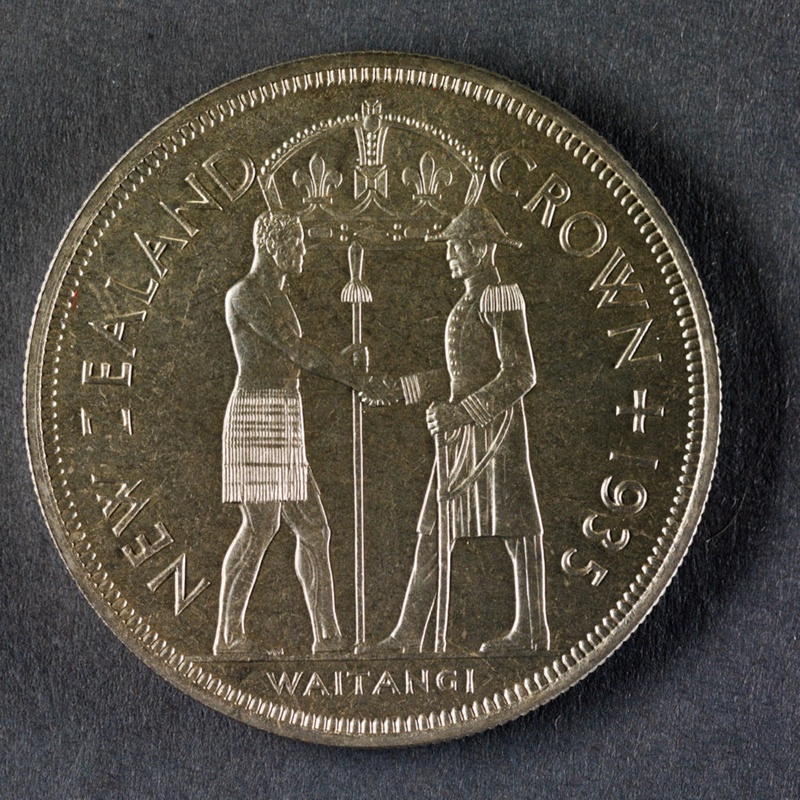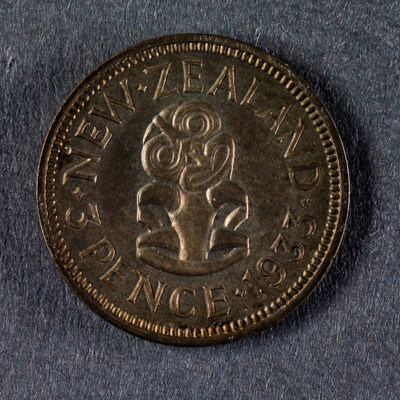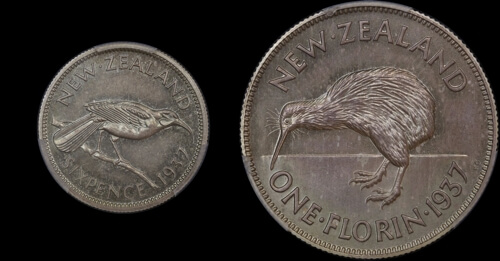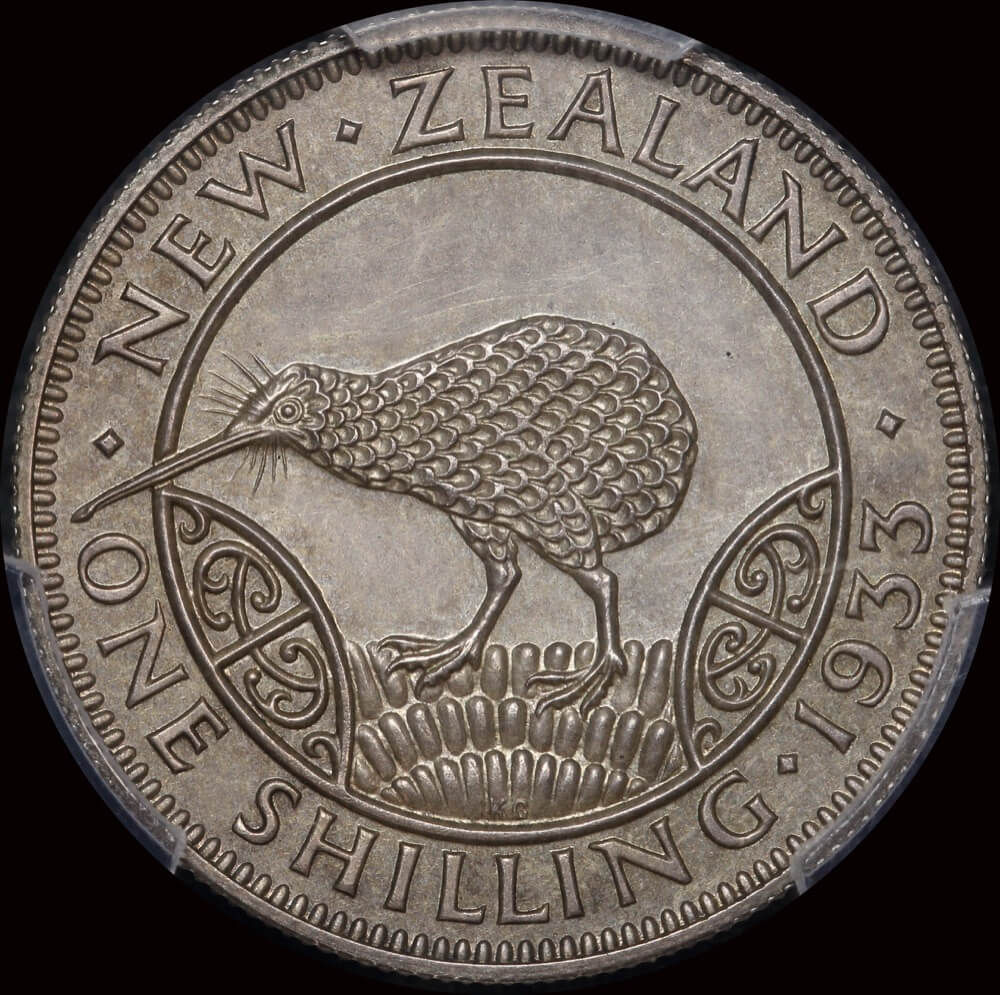What Is New Zealand's Rarest Coin?

Although New Zealand's first national coins were released in 1935, the answer to this question has changed over the past few decades.
Not because any particularly-rare coins have been produced in that period of time, but because the coin that was once regarded as New Zealand's rarest coin disappeared and hasn't been seen since 1989!
A "normal" person will think this question might seem to be fairly straightforward, but a true numismatist will declare that the correct answer depends on the definitions used.
The table below identifies the factors that affect the answer:
New Zealand's |
Rarest |
Coin |
| Are we only considering coins struck for the New Zealand national government? | Are we only measuring the number struck? The number in existence? | Are we only considering coins currently in circulation? |
| Are we including any tokens struck by private merchants? | Are we only including coins that are actually available for collectors to own? | Are coins struck specially for collectors, museums or royalty included? |
For the purposes of this article, we're only going to count official New Zealand coins that are available for collectors to own.
Privately-struck tokens and coins that aren't available to collectors (i.e. those only held by museums or only thought to exist) aren't included.
With these criteria in place, let's run through the contenders for New Zealand's rarest coin:
1935 Pattern Waitangi Crown |
1935 Pattern Tiki Threepence |
1937 Pattern Uniface Sixpence and Florin |
1933 Pattern Kiwi Shilling |
 |
 |
 |
 |
| Image courtesy of the Reserve Bank of New Zealand | Image courtesy of the Reserve Bank of New Zealand |
1. 1935 Pattern Waitangi Crown
Although the Treaty of Waitangi was signed in 1840, the Waitangi crown was struck for collectors in 1935. Numerous changes were made to the initial design before it was accepted by the New Zealand government, a "pattern" of the earlier designs somehow made its way into private hands, and for a long time was regarded as New Zealand's rarest coin. After appearing in an auction in Sydney in November 1992, it was unfortunately lost in the mail and has never been seen since. Only one example is held in The Reserve Bank of New Zealand Museum. Verdict: Disqualified - Not Available.
2. 1933 Pattern Tiki Threepence
The Reserve Bank of New Zealand Museum contains another incredible coin that isn't available anywhere else - it is a threepence dated 1933, and features a tiki on the reverse. This coin was rejected by the government early on in the design process, none are known in private hands. Verdict: Disqualified - Not Available.
3. 1933 Pattern Kiwi Shilling
This is another rejected design struck during the design process, the difference between the Kiwi shilling and the Tiki threepence is there are two Kiwi shillings available to collectors. This is also the only New Zealand pre-decimal coin struck in 75% pure silver. Verdict: A Contender for New Zealand's rarest coin.
4. 1937 Uniface Pattern Florin and Sixpence
In December 1937, Queen Mary took Princess Elizabeth and Princess Margaret to visit the Royal Mint in London. Five presentation sets of coins were especially struck for the Royal visitors, two New Zealand coins were included in them. Three of the five are still held by the Royal Collection Trust, the set held by the Royal Mint Museum has "disappeared", which leaves just one example of each of the 1937 Uniface Pattern Florin and 1937 Uniface Pattern Sixpence available to collectors to own. These are also the only New Zealand pre-decimal coins struck in 92.50% pure silver. Verdict: Equal contenders for New Zealand's rarest coin.
As of the date of this article [March 2020], we are not aware of any other coins officially struck for the New Zealand government and available to collectors that are rarer than those listed here.
Based on the criteria above, as the 1937 uniface pattern sixpence and florin can be equally regarded as New Zealand's rarest coins - they are each unique in private hands. Some collectors may dismiss them as they are uniface patterns (the heads side of each coin is blank), but they are unequivocally official New Zealand patterns.
As there are two 1933 pattern Kiwi shillings available to collectors, they are slightly but importantly less rare than the 1937 uniface patterns. Importantly for some collectors, it has been fully struck on both sides, so will be more appealing as a result.
Will the 1935 Pattern Waitangi Crown ever re-appear on the market again?
Will a 1933 Pattern Tiki Threepence ever be offered to collectors?
Until either of those unlikely events happen, the three coins listed above have to be regarded as New Zealand's rarest coins.
